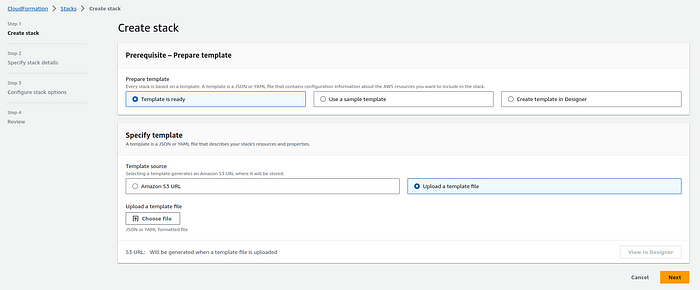Mastering AWS CloudFormation: Building API Gateway Routes for HTTP POST Method Excellence

Introduction :-
In the world of cloud computing and infrastructure as code, AWS CloudFormation is a powerful tool for provisioning and managing AWS resources through code. This snippet of CloudFormation code exemplifies the creation of an #Amazon API Gateway route. Amazon API Gateway is a service that allows you to build, deploy, and manage APIs at scale, and it plays a crucial role in connecting your applications and services with the outside world.
The provided code specifies the properties of an #API Gateway route, such as the HTTP method, path, and integration target. It is essential for defining how incoming requests to a specific path are handled within the AWS ecosystem. This specific route is configured for #HTTP POST requests to a ‘/ping-fed/v1/logout’ path and doesn’t require any form of authorization.
Here’s a breakdown of the code:
Type: 'AWS::ApiGatewayV2::Route': This defines a #CloudFormation resource of type '#AWS::ApiGatewayV2::Route'. It's used to create a route in Amazon API Gateway version 2.Properties: This section specifies the properties for the route.
ApiId: The ID of the #API Gateway to which this route is associated. It uses theFn::ImportValuefunction to import the value of${ApiGatewayStackName}-ApiGatewayId. The${ApiGatewayStackName}should be a reference to the stack name where the #API Gateway is defined.RouteKey: This defines the route key for the API route. In this case, it's set to 'POST /ping-fed/v1/logout'. This means that this route will handle HTTP POST requests to the '/ping-fed/v1/logout' path.AuthorizationType: The authorization type for this route. In this case, it's set to 'NONE', which means no authorization is required to access this route.Target: This specifies the integration target for the route. The!Joinfunction is used to concatenate elements together. In this case, it concatenates the string 'integrations' with the reference to theApiGatewayIntegration.!Ref ApiGatewayIntegration: This is a reference to another resource in your #CloudFormation template, likely an #API Gateway integration that specifies how requests to this route are handled.
This CloudFormation template defines a route for handling #HTTP POST requests to the ‘/ping-fed/v1/logout’ path with no required authorization. The actual integration details, such as what the integration does and where it sends requests, are expected to be defined elsewhere in the template. Make sure that you have the necessary resources, such as the #API Gateway and integration, defined in your #CloudFormation stack for this route to work as expected.
Deployment Steps
Follow these steps to upload and create the #CloudFormation stack using the #AWS Management Console:
- Sign in to the #AWS Management Console: Log in to your AWS account if you haven’t already.
2. Navigate to #CloudFormation: Go to the #AWS CloudFormation service from the #AWS Management Console.
3. Click the “Create stack” button.
4. Upload the #CloudFormation template file (YAML).

Yaml:
AWSTemplateFormatVersion: '2010-09-09'
Description: Create an API Gateway Route for HTTP POST Method
Resources:
MyApi:
Type: 'AWS::ApiGatewayV2::Api'
Properties:
Name: MyAPI
MyRoute:
Type: 'AWS::ApiGatewayV2::Route'
Properties:
ApiId: !Ref MyApi
RouteKey: 'POST /ping-fed/v1/logout'
AuthorizationType: NONE
Target: !Join
- '/'
- - integrations
- !Ref MyIntegration
MyIntegration:
Type: 'AWS::ApiGatewayV2::Integration'
Properties:
ApiId: !Ref MyApi
IntegrationType: HTTP_PROXY
IntegrationUri: 'https://example.com' # Replace with your integration target URI
PayloadFormatVersion: 2.0
Outputs:
ApiGatewayEndpoint:
Description: URL of the API Gateway endpoint
Value: !GetAtt MyApi.ApiEndpoint
5. Specify Stack Details:
Enter a Stack name for your deployment.
Provide parameter values as needed.
Review and acknowledge the capabilities .
You can set additional stack options or tags if necessary.
6. Review and Create:
Review the stack details and #configuration.
Click “Create stack” to initiate the #deployment.
7. Monitor Stack Creation:
The CloudFormation stack creation process will begin.
Monitor the stack events in the #AWS Management Console.
Conclusion :-
In summary, #AWS CloudFormation is a versatile tool for creating, configuring, and managing #AWS resources using #infrastructure as code. This code snippet is just one piece of the puzzle in building a comprehensive infrastructure. By defining an #API Gateway route, it establishes a path for processing POST requests to a specific endpoint, ensuring a seamless interaction between your application and the #AWS cloud environment
